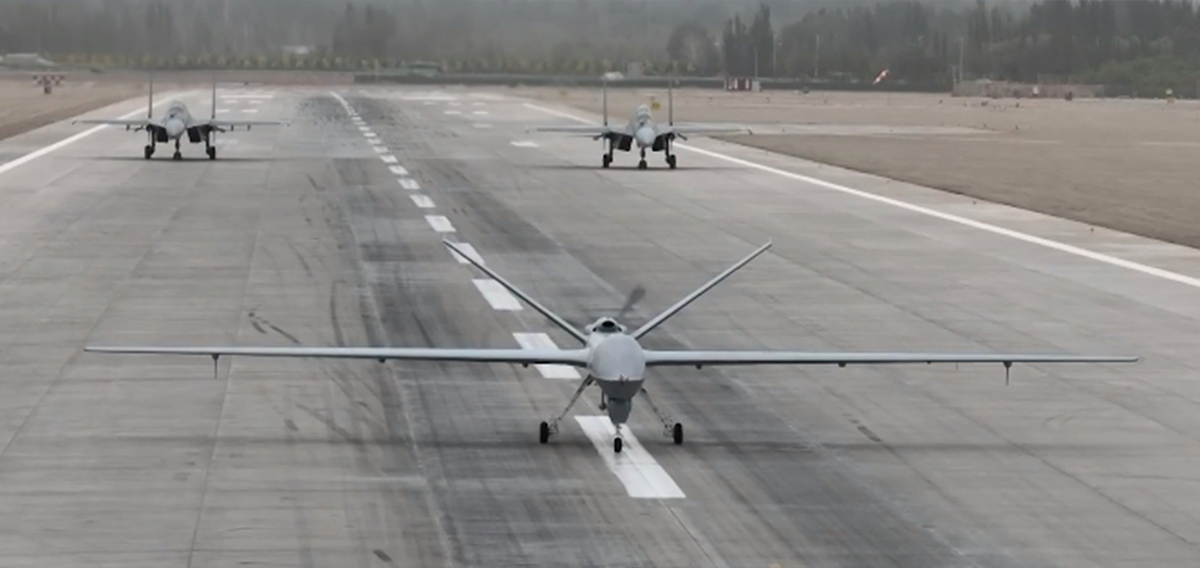
A GJ-2 armed reconnaissance drone of the Chinese People’s Liberation Army Air Force readies for takeoff, to be followed by two J-16 fighter jets. Photo: Screenshot from China Central Television
The Chinese People's Liberation Army (PLA) Air Force has carried out joint training between an armed reconnaissance drone and two fighter jets, with experts saying on Thursday that manned-unmanned integration with only a few aircraft can complete operational level strike missions.
The undated training at an undisclosed location featured a GJ-2 armed reconnaissance drone and two J-16 fighter jets, according to a report by China Central Television (CCTV) on Thursday, which unveiled such an exercise to the general public for the first time.
Li Yang, head of a PLA Air Force drone group, said in the report that drones have integrated into the PLA's combat system and achieved some good results.
Future warfare is a confrontation of cognition, and so the ideas and cognition of the people who operate these unmanned weapons and equipment are the deciding factor to victory or defeat on the battlefield, Li said.
During the training, the GJ-2 took off from an airfield, with the J-16s waiting behind it, the CCTV report shows.
The drone fired missiles at some targets, while the fighter jets' role was not elaborated on in the report.
While there are many differences between the GJ-2 armed reconnaissance drone and the J-16 fighter jet, including top speed, maneuverability, range and endurance, they can integrate with and complement each other in many ways, analysts said.
The slower drone could take off first, and as it approaches the target zone, the faster fighter jets could then take off to catch up and form a formation for a short period above the target zone and carry out missions, Fu Qianshao, a Chinese military aviation expert, told the Global Times on Thursday.
Another possibility is that the fighter jet arrives at the target zone first using its speed advantage, wins air superiority and launches a first wave of attack, before leaving the target zone to be cleaned and controlled by the slower but longer-enduring drone; visa versa, the drone could also arrive first to conduct reconnaissance, and summon the fighter jets when necessary, Fu said.
In all scenarios, the drone and fighter jets are connected by data links that allow them to communicate, distribute missions and transfer data, the expert said.
"A few J-16s and a few GJ-2s operating together can carry out operational level strike missions or conduct non-stop strike missions on key tactical targets," he said.




